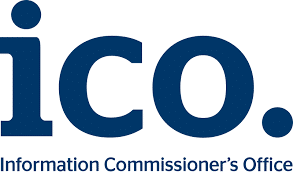In the increasingly competitive digital landscape, solicitor firms in the UK must leverage every tool at their disposal to enhance their online presence and expand their marketing operations. One of the most potent, yet often underutilised, tools is Google Trends. By harnessing the power of this free resource, solicitor firms can gain invaluable insights into search behaviour, refine their SEO strategies, and ultimately improve their organic search rankings. This article explores how Google Trends can be effectively utilised to boost the online visibility of solicitor firm websites in the UK.
1. Understanding Google Trends and Its Relevance
Google Trends is a powerful tool that provides data on search trends over time. It allows users to see how often specific search terms are entered relative to the total search volume. For solicitor firms, understanding these trends is crucial, as it helps to identify the keywords and topics that potential clients are searching for, allowing for more targeted and effective SEO strategies.
Google Trends offers several key features:
- Search Volume Index: This shows how popular a search term is relative to the highest point over a given time frame.
- Geographical Insights: Google Trends provides data on where searches are coming from, which is invaluable for firms targeting specific locations within the UK.
- Related Queries: This feature reveals related terms that users are searching for, helping to uncover additional keyword opportunities.
2. Keyword Research and Optimisation
One of the most significant advantages of Google Trends is its ability to enhance keyword research, a cornerstone of effective SEO. Here’s how solicitor firms can use Google Trends to identify and optimise for the most relevant keywords:
a) Identifying Trending Keywords
Solicitors can use Google Trends to discover which legal terms or topics are currently trending. For instance, during specific times of the year, there may be a spike in searches related to family law or wills and probate. By identifying these trends, firms can tailor their content to match the increased demand, ensuring they are providing timely and relevant information.
b) Comparing Keywords
Google Trends allows users to compare the popularity of different keywords. For instance, a solicitor firm may be unsure whether to focus on “divorce solicitor” or “family lawyer” in their content. By comparing these terms in Google Trends, they can see which is more commonly searched and adjust their strategy accordingly.
c) Seasonal Trends
Many legal services are subject to seasonal trends. For example, there might be a rise in personal injury claims following certain times of the year or increased interest in employment law during periods of economic uncertainty. Google Trends can help solicitor firms anticipate these patterns and create content in advance, positioning themselves as the go-to resource when the demand peaks.
3. Geo-Targeting for Local SEO
For solicitor firms, especially those operating in specific regions of the UK, local SEO is crucial. Google Trends offers geo-targeting data that can significantly enhance a firm’s local SEO efforts.
a) Identifying Local Demand
Google Trends allows firms to see where specific search terms are most popular within the UK. For example, a solicitor firm in Manchester might find that certain legal services are more sought after in their region compared to others. This insight enables firms to focus their SEO efforts on the services that are in highest demand locally, improving their visibility in relevant searches.
b) Tailoring Content for Local Audiences
Using the geographical data from Google Trends, solicitor firms can tailor their content to address the specific needs and concerns of local clients. For instance, if there’s an uptick in searches for “tenant rights in London,” a firm could publish blog posts or create landing pages addressing this issue, thereby attracting more local traffic.
c) Optimising Google My Business Listings
Google Trends data can also inform the optimisation of a firm’s Google My Business (GMB) listing. By understanding what potential clients in their area are searching for, firms can optimise their GMB profiles with relevant keywords, making it easier for local clients to find them.
4. Content Strategy and Planning
Content is a critical component of any SEO strategy. Google Trends can inform a solicitor firm’s content strategy, ensuring that the content produced is not only relevant but also aligns with current and emerging search trends.
a) Creating Evergreen Content
Evergreen content is content that remains relevant over time. Google Trends can help identify such topics by highlighting terms that have consistently high search volumes. For instance, topics like “how to file for divorce” or “what to do after a car accident” may have sustained interest, making them ideal for evergreen content.
b) Capitalising on Emerging Trends
In addition to evergreen content, solicitor firms should also create content that capitalises on emerging trends. By regularly monitoring Google Trends, firms can identify new topics that are gaining traction and produce content on these subjects before their competitors do. This proactive approach can help firms establish themselves as thought leaders in the legal industry.
c) Updating and Repurposing Content
Google Trends can also be used to breathe new life into existing content. If a particular topic is experiencing a resurgence in interest, firms can update their old content to ensure it is current and re-promote it across their channels. Additionally, content that performed well in the past can be repurposed into new formats, such as infographics or videos, to reach a wider audience.
5. Monitoring Competitor Activity
Google Trends is not only useful for understanding the behaviour of potential clients but also for keeping an eye on competitors. By analysing trends related to competitor brands or services, solicitor firms can gain a competitive edge.
a) Competitor Keyword Analysis
By entering a competitor’s brand name or primary services into Google Trends, firms can see how they stack up in terms of search interest. This information can be invaluable for identifying gaps in the market or areas where a firm could outperform its competitors.
b) Analysing Content Gaps
Google Trends can reveal what content competitors are focusing on by identifying the keywords and topics where they have strong visibility. Solicitor firms can use this data to find content gaps—areas where they can create content that their competitors have overlooked. This approach can help in capturing a portion of the market that is currently underserved.
c) Benchmarking and Strategy Adjustment
By continuously monitoring how their brand and services are performing in comparison to competitors on Google Trends, solicitor firms can benchmark their SEO efforts and adjust their strategies accordingly. For example, if a competitor is seeing increased search interest due to a particular marketing campaign, a firm can analyse this trend and respond with its own campaign to maintain its competitive position.
6. Improving User Experience and Engagement
User experience (UX) is a critical factor in search rankings, and Google Trends can play a role in improving UX by helping firms understand what users are looking for and how they are searching for it.
a) Refining Website Navigation
By understanding the most common search terms related to their services, solicitor firms can optimise their website’s navigation to make it easier for users to find what they need. For example, if “no-win-no-fee personal injury claims” is a popular search term, this could be highlighted more prominently in the site’s navigation or homepage.
b) Enhancing On-Site Search Functionality
If a firm notices certain terms consistently trending in Google Trends, they can improve their on-site search functionality by ensuring these terms yield relevant results. This ensures that visitors to the site can quickly find the information they’re looking for, improving the overall user experience.
c) Customising Content Formats
Google Trends can also inform the types of content formats that are most engaging for users. For instance, if video content related to legal advice is seeing an uptick in searches, solicitor firms could consider creating more video content to meet this demand. By offering content in formats that users prefer, firms can improve engagement metrics, which in turn can positively impact their search rankings.
7. Leveraging Google Trends for Paid Advertising Insights
While the focus here is on organic search, it’s worth noting that Google Trends can also provide insights that can be leveraged for paid advertising campaigns, which can complement organic efforts.
a) Identifying Cost-Effective Keywords
Google Trends can help solicitor firms identify less competitive, yet still highly relevant, keywords that can be used in pay-per-click (PPC) campaigns. By targeting these terms, firms can potentially achieve higher visibility at a lower cost.
b) Timing Campaigns for Maximum Impact
By analysing seasonal trends and the timing of search spikes, solicitor firms can time their PPC campaigns to coincide with periods of high demand. This ensures that their ads are being seen by the largest possible audience when interest is at its peak, maximising the return on investment.
c) Aligning Organic and Paid Strategies
Finally, using Google Trends to align organic and paid search strategies can lead to more cohesive and effective marketing efforts. For example, if a particular keyword is trending, firms can ensure they are both ranking organically for that term and also bidding on it in their PPC campaigns, dominating the search results and increasing their chances of attracting potential clients.
8. Regular Monitoring and Adaptation
The digital landscape is dynamic, and trends can shift rapidly. Therefore, regular monitoring of Google Trends is essential for staying ahead of the curve.
a) Setting Up Alerts
Google Trends allows users to set up alerts for specific keywords or topics. Solicitor firms can use this feature to stay informed about significant changes in search behaviour, enabling them to quickly adapt their strategies as needed.
b) Continuous Content Optimisation
As trends evolve, so should a firm’s content. Regularly reviewing Google Trends data allows firms to continually optimise their content, ensuring it remains relevant and aligned with current search behaviour. This ongoing optimisation is key to maintaining and improving organic search rankings.
c) Adapting to Changes in Client Behaviour
By keeping a close eye on Google Trends, solicitor firms can adapt to changes in client behaviour as they happen. Whether it’s a sudden increase in searches for a specific legal service or a shift in how clients are searching for solicitors, being able to quickly respond to these changes can give firms a significant competitive advantage.
Conclusion
Google Trends is a versatile and powerful tool that can significantly enhance a solicitor firm’s SEO efforts when used effectively. From keyword research and content strategy to local SEO and competitive analysis, the insights provided by Google Trends can help firms in the UK stay ahead of the competition and improve their organic search rankings.
By regularly monitoring search trends and adapting their strategies accordingly, solicitor firms can ensure they are meeting the needs of potential clients, providing relevant and timely information, and ultimately, increasing their visibility in search engine results pages. In an industry as competitive as legal services, the strategic use of Google Trends can be the difference between being found by potential clients and being overlooked.

Jonathan Fagan is MD of Ten-Percent.co.uk Limited and TP Recruitment Limited, a set of websites involved in a range of recruitment work. Jonathan has been running small businesses for over 20 years and has a number of interests and investments in companies as diverse as transcription, legal recruitment and a bit of marketing. He is an author of a number of guides and books, together with a children’s novel. In his spare time he enjoys playing golf, cricket, coaching girls’ football, operating a parent taxi, lots of running and paddleboarding on Bala Lake and the River Dee. He is a strong believer in a good work-life balance and regular blogs on making money vs enjoying life. Jonathan’s website is https://www.jonathanfagan.co.uk



